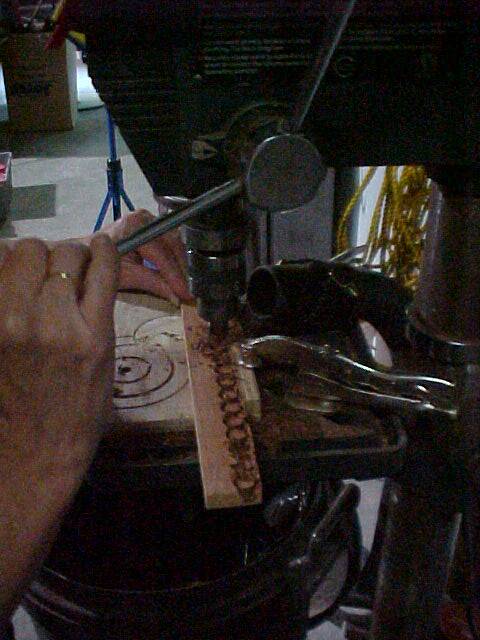PRESERVATION VS. RESTORATION
Read more about the difference between Preservation and Restoration at ACBS.org, but essentially, once 60% of a boat (not including bottom replacements ) is replaced the boat no longer qualifies as a PRESERVED" boat, and is considered to be a RESTORED boat.
Many times preservation can be a low cost option as well. On this boat we have taken steps to preserve whenever possible, and examples of how this is done are featured on this page.
1960 24' Chris Craft Sportsman
There was a small amount of rot near a screw hole that didn't show on the outer surface of the plank. This rotted area was removed with a router and a plug glued into place with a WATERPROOF glue. There was also an area of the plank that had broken out from where a fastener was not removed before removal of the plank. In this case the wood was still attached to the plank where it had cracked out of position and was glued into place as well. This repair took much less time than a plank replacement with the steps of re-saw, plane, rough duplicate and hand plane to its final dimensions, and angles.
There was a substantial amount of rot near several screw holes that didn't show on the outer surface of the plank. Just as in the example above, this rotted area was removed with a router, and a plug glued into place with a WATERPROOF glue. You can see the thickness of the remaining original plank. The butt splice will also be extended to ensure there is no structural concern. As with the preservation measure taken above this repair took much less time than a plank replacement.
There was a substantial amount of rot near several screw holes at the stern that came through the outer surface of the plank. A short plank was used in this case. Always attempt to make short planks in frame bays that do not already have joints.
There were rotted areas - some that were under the spray rail, some that were in the bottom and boot stripe painted areas. The top left plank in the photo has been stained as it will have some of the wood exposed in varnished area.
Sometimes it just doesn't make sense to preserve. There was extensive rot at each end of the plank, and two other spots near where the plank contacted the chine. It was more Time / Cost effective to just replace the entire plank rather than work the 3-4 areas that needed repair.
There were also two transom planks that were duplicated.
Rot was cut from these original planks and then plugs were made from the old planks to be used to bung the screw holes on the many other original planks that were removed and replaced. By using original hull material for these bungs the grain structure and color of the wood is automatically matched as closely as possible.
New Toll Free Phone Number 866-921-2628
